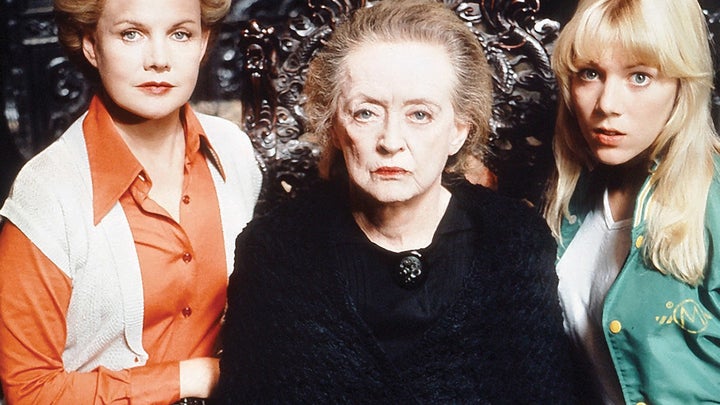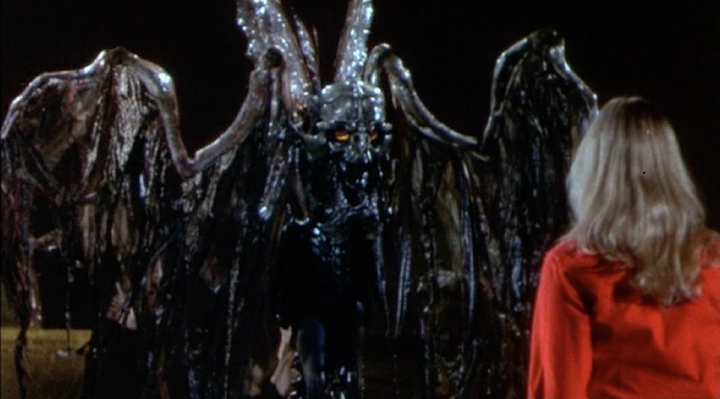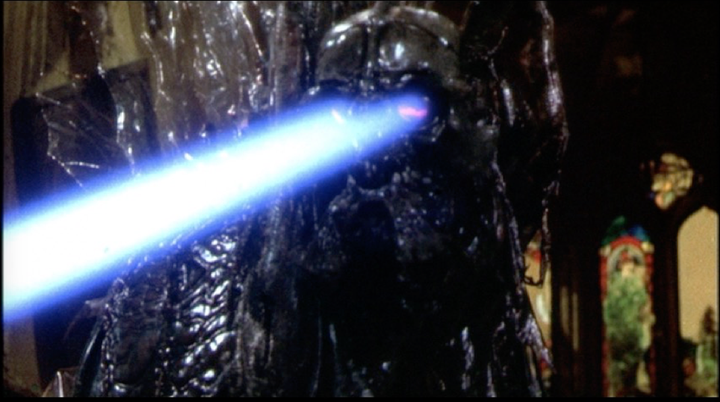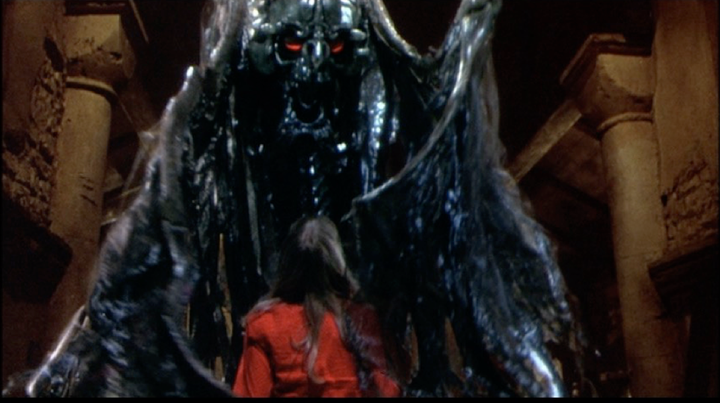
In 1980, a New York press screening of Disney’s horror “The Watcher in the Woods,” starring Bette Davis, ended in near laughter.
A bad sign, executives knew, even for a scary movie for kids. The company immediately pulled the film and set about trying to fix it. But what was wrong with it?
As a creepy live-action flick, “The Watcher in the Woods” was a departure for Disney at a time when it wasn’t producing very many of what would become its classics. Based on the Florence Engel Randall novel A Watcher in the Woods and directed by John Hough, it featured Lynn-Holly Johnson as Jan Curtis, who moves into an appropriately ancient English mansion with her parents and sister, Ellie, played by Kyle Richards. Next door is the strange old Mrs. Aylwood (Davis), whose daughter Karen mysteriously disappeared years ago.
Jan notices horrifying things around the house. She sees glowing shapes and a zombie-like blindfolded girl in mirrors, which then shatter. Meanwhile, her young sister begins acting possessed. Ellie writes “NERAK” on the inside of a dirty window, claiming it’s the name of her new puppy, but, from the other side, it gives townies who read “KAREN” a fright. Eventually Jan learns that Karen disappeared after a seance performed during an eclipse by her now middle-aged friends ― swapping her, somehow, with an entity from another dimension. She reckons she can reverse the process by repeating it, and, in the end, Karen is freed.

So, again, what was the problem? (Aside from the whole NERAK bit?)
Aliens. Aliens were the problem.
While we weren’t able to get in touch with Hough, we did track down an out-of-production copy of “The Watcher in the Woods” with his director’s commentary. In the film shot by Hough, Karen is taken by an alien (the “Watcher”). When Jan saves her, the monster envelops her in its batty wings and zips off to another world ― except Jan is allowed to come back with Karen. According to the director, though, the quality of animation (involving computerized graphics and what looks like an animatronic contraption) was unforgivable.
“The animation was out of my control. I had no say,” Hough says.
“The last four minutes undid all the good work of the previous 87 minutes when the monster came out,” he continues. “It moved in a very stiff way, and it really wasn’t up to what we were later going to see in later films.”
We’d have to agree:



Yikes.
When the monster showed up onscreen looking like shredded trash bags hot-glued to a Halloween mask, Hough says that “everybody started laughing, practically” in the New York theater.
And so a new ending was shot with fewer special effects. (Even that wasn’t so simple; producers had to choose from over 100 other options.) In the ending that aired in select theaters the following year, the Watcher is a vague entity that appears as a burst of bright light.
“It’s a pity. The other ending was far more interesting,” Hough says.
The film had other problems, though. According to Hough, Disney executives considered the entire original film “too dark and threatening and black.” They hired another screenwriter, Rosemary Anne Sisson, to lighten the mood, and the result is a jumbled mix of horror tropes ― creepy house, creepy woods, the occult, a crusty caretaker of sorts ― that feels wonderfully out of place in Disney’s cinematic record.
We’re not mad about it. We’re just glad that movie graphics has come a long, long way.

Hit Backspace for a regular dose of pop culture nostalgia.

